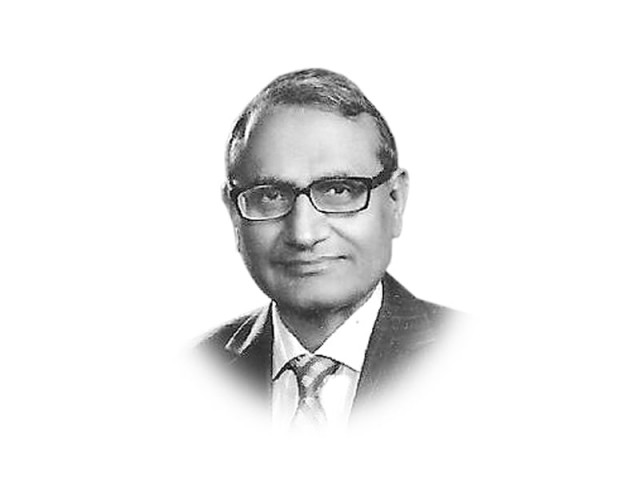Is Pakistan’s economy in recession?
In our case, the economy displays a positive but low GDP growth even in the worst of economic times.

pervez.tahir@tribune.com.pk
Does that mean our economy is never in recession? International financial institutions apply the rule of three per cent growth when it comes to global recession because most developing economies have low but positive growth rates. In our case, the economy displays a positive but low GDP growth even in the worst of economic times because of the continued presence of a large informal sector and disguised unemployment. Anything below a GDP growth of three per cent, in my view, signals a receding economy. The current year’s growth target of 4.3 per cent was overambitious when compared to the previous year’s questionable achievement of 3.7 per cent. All the latest international forecasts are well below this target: IMF 3.5 per cent, World Bank 3.8 per cent and the Asian Development Bank 3.7 per cent.
In the absence of quarterly GDP data, it is hard to assess the economic prospects during a year. However, a number of factors suggest that growth may be no more than three per cent. First, there is no evidence that the energy crisis, the major constraint on growth, is even close to being resolved. Second, major crops have not suffered any setback, but information available so far indicates that their overall growth is likely to be around three per cent against the target of 3.8 per cent. Third, large-scale manufacturing growth was 2.38 per cent in the first five months. Around one-third of the industries, including the largest textiles sub-sector, showed zero or negative growth. More industries are likely to follow, making the annual target of 2.5 per cent difficult to achieve. Fourth, exports in the first six months rose by 7.58 per cent. However, world demand is such that it will be difficult to sustain the growth rate in the remaining six months of the current financial year. Fifth, imports declined by 3.33 per cent in the first half of the year, the decline being most pronounced in machinery and industrial inputs. This brings us to the last and most worrying feature of the gathering economic storm — a steadily falling investment since 2006-07. From 22.5 per cent of GDP, the investment rate fell to 12.5 in 2011-12. With uncertainty knowing no bounds, the target of 13.1 per cent for the current year has nothing going for it. Except for small-scale manufacturing, ownership of dwellings and services — sectors with a weak information base — private investment fell substantially in all other sectors. In large-scale manufacturing, the most dynamic sector from the point of view of growth and employment, inflation-adjusted investment crashed from Rs141 billion in 2006-07 to a mere Rs42 billion in 2011-12. The current year cannot be any better.
As investment falls and real output stagnates, growth can only come from consumption, as it has in recent years. But decreasing inflation suggests lower demand. Achieving growth above three per cent will require a miracle.
Published in The Express Tribune, February 1st, 2013.














COMMENTS
Comments are moderated and generally will be posted if they are on-topic and not abusive.
For more information, please see our Comments FAQ